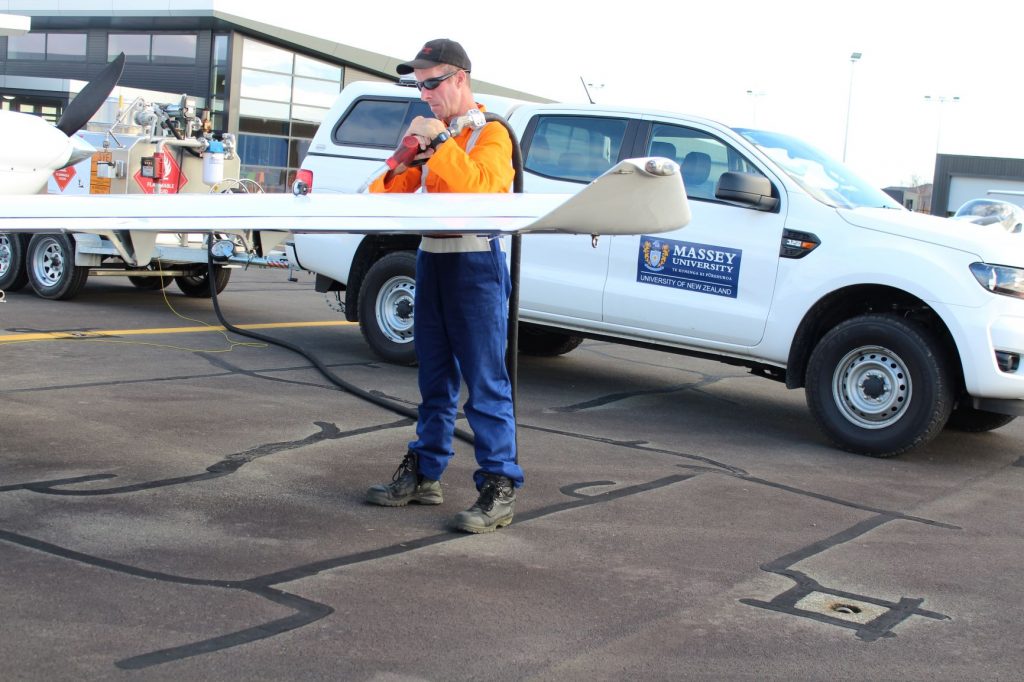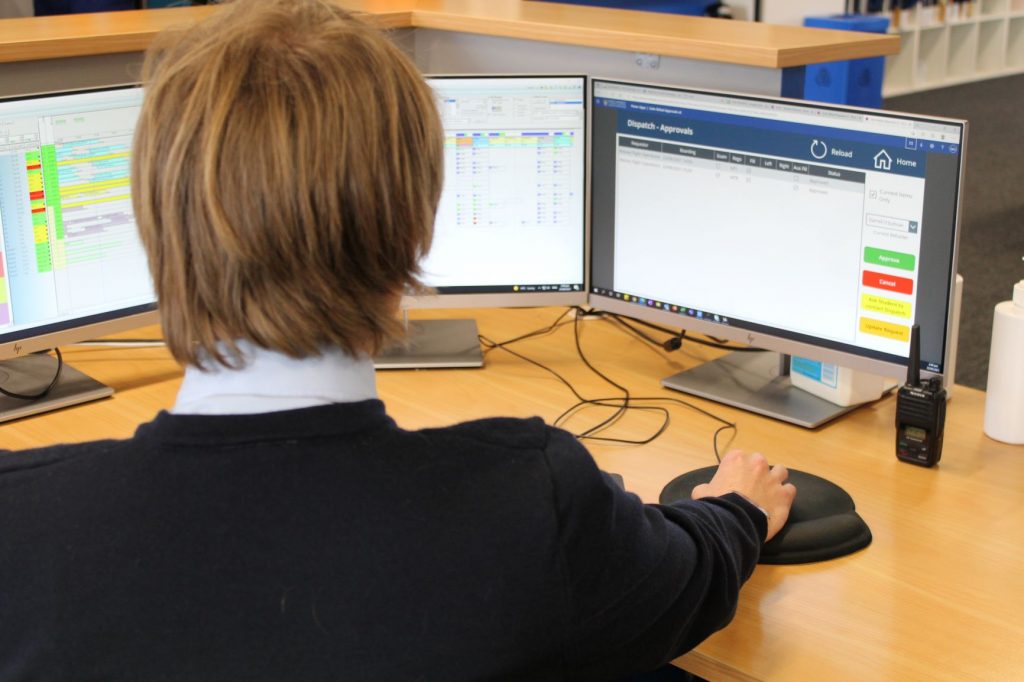Massey University’s School of Aviation dramatically transformed its systems using Microsoft Teams and the Microsoft Power Platform, improving internal operations and communication with students remarkably quickly.
Universities around the world have a lot going on. Keeping students engaged is a priority, of course, and they’re also like any other workplace; with constant internal communications and the need to collaborate. Throw a fully-fledged flight training school, with real planes, into the mix, and you get a lot of organisational complexity, as well as added risk and compliance.
Massey University’s School of Aviation is unique in the Southern hemisphere: it provides practical pilot’s training as well as academic instruction, so that students can achieve a degree and a pilot’s license at the same campus. This means the School of Aviation balances all of the normal operations of a university with what is essentially a mini airline, with flights to plot and schedule, uniforms to wear and planes to refuel and maintain. That’s a lot to manage, and until recently, many of these systems involved manual data input and ad-hoc solutions.
The School of Aviation management realised it needed a holistic solution to better oversee the organisation, and ensure they could ride out turbulence, both in the air and in the classroom.
“After lockdown, we examined our digital systems and decided that what we needed was a system that included solutions for a broad spectrum of processes,” says Ashok Poduval, Chief Executive of the Massey University School of Aviation. “Communication, teamwork and collaboration was a large part of it, and we were also looking to streamline our operational processes with digital solutions.”
LANDING SAFELY ON TEAMS
The first major part of the digital transition was a full-scale deployment of Microsoft Teams and OneDrive. Teams has allowed effective collaboration and constant contact between staff-members, and it has really come into its own in enabling communication between faculty and students.
“We were using Teams in our flight systems already, so it just made sense to roll it out across the whole School,” says Ashok at Massey University.
Massey brought in Lee Harper, Cloud Evangelist at pcMedia, to help transition their workflows to the cloud. pcMedia is a leading Microsoft partner in the education space, and has helped transition more than 100 New Zealand schools from on-premise servers to the cloud. Lee worked alongside the Massey and School of Aviation in-house IT teams two days a week, helping them set up the technology, build their skills, address issues as they arose and set them on a course for success.
“It was a truly collaborative process,” says Lee. “Between Massey’s team, pcMedia’s experience and Microsoft’s support, we could always access someone that knew the solution to any challenge.”
Students in the Bachelor of Aviation (Air Transport Pilot) programme are all issued with a tablet, which they use throughout their study, including in flights and classes.
The nature of practical flight training is such that students often need to be contacted at short notice. Prior to the Teams rollout, flight instructors and operations staff had been contacting students in informal environments, through personal email accounts or phone numbers.
Using Teams, contact between students and staff is now consistent, using a more formal and professional means of communication. Because students and staff all have the same hardware and software, Teams also provides peace of mind that the relevant person can be reached when needed.
The School of Aviation has made sure it is making the most of the Teams platform, building teams and chats, so Teams is the place for students, staff and administrators to go to communicate with one another.
Because the School’s files are now hosted in Sharepoint, Teams is also the gateway for access to them, which makes remote work easier for staff and simplifies file access for all concerned. Compared to workflow that involved remote desktops accessed through VPNs, operating in Sharepoint, OneDrive and Teams has been a quiet revolution for the organisation.
GAINING ALTITUDE
The School of Aviation has paired its Teams rollout with a full-scale deployment of the Microsoft Power Platform to create no-code and low-code solutions to administrative processes. Three School of Aviation staff attended a pcMedia course on using the Power Platform, and they’ve taken to it like ducks to water. Sherryn Irvine, the School of Aviation’s Strategic Projects Officer, and Ivan Campbell, Assistant Chief Flight Instructor, have led the development of Power Apps for all sorts of processes, although neither of them have an IT background.
One area that the Power Platform has created massive benefits is in refueling of aircraft. Before the deployment of a Power App, requesting fuel for one of the School’s fourteen aircraft involved a number of steps where data was manually entered across different apps; a lengthy, complex process which created plenty of room for errors.
The new Power App takes all of that away. Students can request refueling through the app, which is embedded right into the Teams environments. The request then goes through to the relevant people for approval, before going to the refueling team.
The team responsible for refueling aircraft then have a constantly updated list on their tablet of all the active requests, grouped by importance, without moving between work environments. The App has also created benefits for reporting on fuel usage and monitoring for financial purposes, now that there is a single source of truth which is updated at every stage.
One of the great benefits of the way the Power Platform works is that the same thinking can be applied to all kinds of challenges. Sherryn and the School of Aviation team have built similar solutions, without a line of code, for uniform ordering, keeping track of expired products in first aid kits, and more.
FLYING INTO THE FUTURE
Now that they’ve reached cruising altitude, the School of Aviation’s team are planning to put the afterburners on and really ramp up their capabilities using Teams and Power Platform. Some systems in development include an app for keeping track of inventory for maintenance purposes, automating the registration process for professional development courses, and even creating separate dedicated Teams chatbots to help students and staff address FAQs quickly, reducing unnecessary disruption for the receptionist.
“Massey University School of Aviation is a benchmark for what can be achieved with Microsoft technology,” says Dimi Mardas, Higher Education Industry Executive at Microsoft New Zealand. “It’s remarkable to see how much they have achieved without formal IT training, developing solutions to all sorts of problems.”
“The great thing about Microsoft technology for us has been the way it all works together,” says Sherryn. “We can build a Power App that we can plug right into Teams, or a Form we can connect to our website, and through Automate it connects seamlessly across Excel, Word, Lists, Email and Teams. Everything feels consistent and works together without too many steps in the middle.”
Ashok says, “Once everything is in place, we can spend our time working and training the next generation of the aviation industry, not worrying about manual data entry or digging through email trails.”



